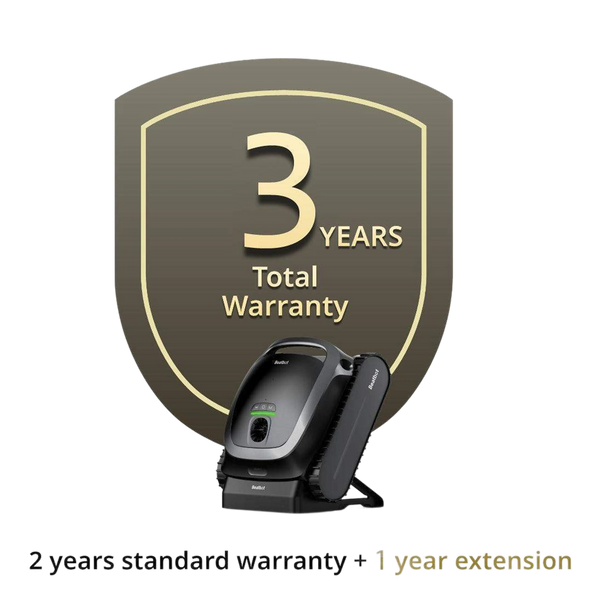Balancing Pool Chemicals: The Essential Guide to Total Alkalinity and Calcium Hardness
Picture this: you've spent hours adjusting the chlorine and pH levels of your pool. The water is crystal clear and everything looks perfect. But overtime you may still find problems such as scaling, corrosion, or pH instability. Why could that happen? We’ll tell you that it’s because there was a hidden key element in pool chemistry that you might have overlooked: the level of total alkalinity (TA) and calcium hardness (CH).
These two chemicals may not get as much attention as chlorine or pH, but by managing these factors, you can not only prevent problems such as scaling, corrosion, or pH instability, but also saving time, money, and effort.

Understanding Total Alkalinity (TA)
So, what exactly is Total Alkalinity? It measures all carbonates, hydroxides and alkaline substances in the water. Simply put, TA is the ability of the pool to resist changes in pH. It acts as a buffer, absorbing and smoothing out sharp changes in pH. The recomended range is between 80 and 120 parts per million (PPM), keeping TA within this range stabilizes the pH of the pool, making it easier to manage.
The effect of low AT
If the TA is too low, the pool water may become highly acidic. This causes pH instability, which can damage pool surfaces, corrode metal components and reduce the effectiveness of chlorine. Moreover, your pool becomes a breeding ground for algae, bacteria, and scale buildup.
The effect of high TA
On the other hand, if TA is too high, it may be difficult to adjust pH. This often results in the formation of limescale, which is the unsightly white chalky buildup on tiles and pool surfaces. Too much TA can also make it harder to manage pH fluctuations, waste chemicals, and lead to inefficiencies.

Understanding Calcium Hardness (CH)
Now, let’s talk about Calcium Hardness (CH). Simply put, calcium hardness is the concentration of dissolved calcium in the water. The calcium content in your pool determines how hard of soft your water, and has a significant impact on your pool surface and equipment.
Current industry standards call for maintaining calcium hardness in the ideal range of 200–400 ppm in pools and 150–250 ppm in spas, usually our target is 250 ppm.
The Role of Calcium in Pool Water
Calcium helps prevent water from becoming "aggressive," which means it won’t start leaching calcium from your pool walls, tiles, or equipment. Without enough calcium, you risk etching or damaging surfaces, causing corrosion to your plumbing and pool equipment.
Risks of Low Calcium Hardness
Low calcium can lead to the pool water literally "starving" for calcium, attempting to pull out the calcium it needs.This can result in surface damage like pitting or etching, and over time, more severe wear may occur on the pool surface.
Risks of High Calcium Hardness
Calcium hardness levels are too high, this is why scale forms: ugly chalk buildup on pool walls and equipment. In addition, high calcium levels can make the water cloudy and clog pool filters, pumps, and heaters, I don’t think you would like these unpleasant issues to occur.

Adjusting Total Alkalinity and Calcium Hardness
Adjusting Total Alkalinity
-
How to Raise Alkalinity: Use sodium bicarbonate (also known as baking soda). It’s a simple, effective way to raise your TA and keep pH in check.
-
How to Lower Alkalinity: If your TA is too high, you’ll need to lower it using muriatic acid. Just be sure to add it gradually and retest frequently to avoid overshooting.
Adjusting Calcium Hardness
-
How to Raise Calcium Hardness: Use calcium chloride to boost your CH levels. It’s the most common chemical used to increase calcium in your pool.
-
Dealing with High Calcium Hardness: Unfortunately, there’s no quick fix for high calcium levels. The best method? Drain part of your pool and refill it with fresh water to dilute the calcium concentration.
Other Pool Chemicals Impact Alkalinity and Calcium Hardness
Chlorine’s Effect on Calcium Hardness
If you’re using calcium hypochlorite as your chlorine source, be aware that it will gradually raise your calcium hardness levels over time. So, keep a regular check on your CH if you use this type of chlorine.
Interdependence Between pH, TA, and Calcium Hardness
pH, TA, and CH are closely linked. Adjusting one can affect the others, so it’s important to manage them all together. For example, adjusting TA often brings your pH in line, making further adjustments to pH unnecessary.

Balancing Total Alkalinity and Calcium Hardness is essential for maintaining a safe, clean, balanced water environment. When your pool is properly balanced, you not only protectyour pool’s surfaces, equipment, but also ensure the effectiveness of your sanitizers (like chlorine). Balanced water means fewer problems, fewer chemical issues, and a longer-lasting and well-maintained pool.
Briefly, regular testing and adjustments are the key to prevent your pool chemistry from falling into disarray. With a little knowledge and the right tools, such as Beatbot AquaSense Robotic Pool Cleaner to help you clean your water, you can save a lot of labor costs and keep your pool looking great for years to come.















